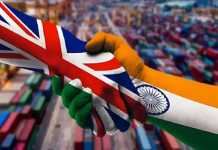This article is written by Khyati Basant, a student at Symbiosis Law School, NOIDA. This article talks about the classical theory of international trade and its essentials.
It has been published by Rachit Garg.
Table of Contents
Introduction
Trade is the concept of exchanging goods and services between entities. International trade, thus, means the concept of exchange between two separate countries. Entities trade because they believe that they will benefit from such a trade/exchange. In other words, this seems like a very simple concept, but in reality, it has many procedures in terms of theory, policy, and business strategies. In this article, we shall discuss the theories of International trade, especially the classical theory.
What is international trade
If you walk into a supermarket and you find yourself with a packet of Lays, or even our favourite Cadbury chocolate, or a can of Coca-Cola, you have experienced international trade. International trade allows you to get goods and services that you might not get domestically. As quoted by Wasserman and Haltman, “Trade can be connoted as transactions among the citizens of different nations. Global economic activities are aided by International trade and are a catalyst of economic growth for various developed countries and also for the developing nations. Differences in various conditions, like resource availability, natural climatic conditions, cost of production, etc., act as the motive behind trade between the countries. International trade has provided the opportunity for employment services in the developing nations. International trade is the reason for the rising living standards of people all over the world.”
The concept of international trade emerged as a sub-part of economic study that deals with the patterns, causes, and effects of global trade. Since the 18th century, the topic has been debated to assess its effect and consequences.
Different theories of international trade
One of the earliest subfields of economic theory is that of global trade and commercial policy. Government officials, thinkers, and economists have debated the factors that influence international trade from the time of the ancient Greeks to the present. They have questioned whether trade benefits or harms a country and, more importantly, have sought to identify the best trade policies for various nations.
Since the time of Greek philosophers, the only tension in international trade has been that domestic businesses, workers, and the economy will be affected by foreign competition. Philosophers analyse the gains from such trade and compare them to the losses of domestic business, thus comparing them to the conclusion of such trade. The tensions caused by this dual perspective on trade have never been resolved. The theories of International trade are –
- Classic or country-based theory of International trade
The classical theory of trade states that goods are exchanged against one another according to the relative amounts of labour embodied in them. It is based on the labour cost theory of value. Goods that have equal prices embody equal amounts of labour. The classic or country-based international trade theory has the following division –
- The Mercantilism theory was developed in the 16th century, and it was one of the earliest efforts to develop an economic theory.
- The Absolute Cost Advantage was introduced in 1776 by economist Adam Smith. He questioned the leading mercantile theory of the time in his publishing – The Wealth of Nations.
- The Comparative Cost Advantage challenged the absolute advantage theory that some countries may be better at producing both goods and, therefore, have an advantage in many areas.
- The Heckscher-Ohlin theory introduced by Smith and Ricardo didn’t help countries determine which products would give a country an advantage. Both theories assumed that free and open markets would lead countries and producers to determine which goods they could produce more efficiently.
- Modern or firm-based theory of International trade
The modern or firm-based theory emerged after World War II. It evolved with the growth of multinational firms and their expansion. The theory incorporates other products and factors like customer loyalty and technology. The modern or firm-based theory of International trade has the following theories –
- Country similarity theory was given by Swedish economist Steffan Linder in 1961, as he tried to explain the concept of in-train industry trade. His theory proposed that consumers in countries that are in the same or similar stages of development would have similar preferences.
- The Product life cycle theory by Raymond Vernon, a Harvard Business School professor, developed the product life cycle theory in the 1960s. The theory, originating in the field of marketing, states that a product’s life cycle has three distinct stages namely new product, maturing product, and standardised product.
- Global strategic rivalry theory was introduced in the 1980s and was based on the work of economists Paul Krugman and Kelvin Lancaster. Their theory focused on multinational companies and their efforts to gain a competitive advantage against other global firms in the same field.
- Porter’s National Competitive Advantage Theory was part of the continuing evolution of international trade theories, Michael Porter of Harvard Business School developed a new model in 1990 to explain national competitive advantage. His theory stated that a nation’s competitiveness in an industry depends on the capacity of the industry to innovate and upgrade.
Classical theory of international trade
Adam Smith and David Ricardo developed the classical theories of international trade. According to the theories given by them, when a country enters into foreign trade, it benefits from specialisation and efficient resource allocation. The foreign trade also helps to bring new technologies and skills that lead to higher productivity.
Mercantilism theory
The Mercantilism theory is the first classical country-based theory. It was put forward in the 17th and 18th centuries. The main contention of this theory was that a country or nation should focus on its welfare and exports rather than imports. The theory focused primarily on strengthening the treasure of the nation and the accumulation of wealth in the form of silver and gold. The 15th century marked the rise of a few nation-states that wanted to strengthen their nations through the development of armies and defence. These nations promoted the export of goods and put restrictions on imports. This is called protectionism. The British colony is one of the most successful examples of this theory, where nations expand their wealth through exports and control trade. They used raw materials from other nations by ruling over them, and then exported the same goods at a higher price to generate wealth for their own nation. France and Spain were a few nations that were successful in building large colonies and generating wealth from governing nations. According to this theory, the government should play a role in the economy by encouraging exports and discouraging imports by using subsidies and taxes. Even today, we can see a few nations, like Japan and China, that still believe in this method and allow limited imports and exports. Supporting perfectionist policies comes at the cost of high taxes and other disadvantages. Mercantilism and protectionist policies only benefit selected nations, whereas the policy of free trade helps in the development of every nation.
Absolute Advantage theory
The economist, Adam Smith in 1776, criticised the theory of mercantilism and gave the theory of absolute cost advantage. He was the father of the modern economy. He supported the necessity of free trade as the only assurance for the expansion of international trade. In this theory, he stated that the countries should only produce those products in which they have an absolute advantage. He focused on the production of those goods that they can produce at a lower cost than other countries and should export those products to countries in which they have a cost advantage.
In his words, if a foreign country can supply us with a commodity cheaper than we can make it, we should better buy it with some part of the production of our own industry, employed in a way in which we have some advantage. Adam’s theory stated that with an increase in efficiency, people in both countries would benefit, and trade should be encouraged. He stated that nations’ wealth should not be judged on how much gold or silver they have but rather on the living standards of their people. Market factors determine trading in a country, not the government. According to him, trade in a nation must flow according to market factors. He also denied the promotion of trade by the government and the restriction of trade.
Comparative Advantage theory
The economist David Ricardo gave the theory of comparative cost advantage in 1817 through his book called ‘The Principle of Political Economy and Taxation’. This theory was later polished by J.S. Mill, Marshall, and others. This theory states that the country should focus on the production of those goods that it has in abundance. A country should import more goods that have the least disadvantage of production and export the surplus of what they produce in their nation.
The theory suggests that a nation should export goods for which its relative cost advantage is greater than its absolute cost when compared with other nations. A country that effectively produces goods may still import them if there is a relative advantage. And a country may still export even if it is not very efficient at importing certain goods from another country. This theory encourages trade to be mutually beneficial. This theory assumes that labour is the only factor of production and that there are no trade barriers between the countries.
Heckscher-Ohlin theory
This theory is also known as factor proportion theory. Heckscher and Ohlin in the 1900s, dealt with the concept of advantages that a country can gain by producing those goods on the basis of factors that are present in abundance in their country. The main basis of this theory was the production factors of a country, like land, labour, and capital. They stated that the cost of any factor of production depended on supply and demand. For example, China and India have cheap labour and they have become the locations for labour intensive industries. This theory explains that there is an imbalance in resources throughout the world, and thus nations should export the resources that they have in abundance.
Essentials of classical theory
The classical theory provides guidance on the question of national policy. The classical economists were mainly concerned with two questions. First, which products must a country import and export? Second, the ratio of the exchange of goods between the countries. The economists answered the first question by saying that the goods that the country needs to produce for production must be those goods whose production suits the climate, the quality of the soil, and the natural resources available for them. Each country should focus on the production of these goods, keep with themselves the necessary amount, and export the excess/surplus to other countries. The classical theory of international trade is mainly focused on the labour cost theory of value. It states that goods must be traded in respect of the labour that is embodied in them. Adam Smith gave an example to explain this, he states that if with the same expenditure of labour one can kill either one beaver or two deers, then one beaver will always be exchanged in the market for two deer. Through this, he meant that the exchange or price in the market must be determined on the basis of labour costs and their influence on supply and demand.
Criticism of the classical country-based theory
There was a shift from the classical theory of international trade to the modern theory, as these theories assume that labour is the only factor for production. It ignores other factors such as land, capital and enterprises. Labour is not perfectly mobile in a country, especially a country like India with its diverse languages, cultures, and working environments. In this dynamic world, technological advances are increasing productivity efficiently. A theory cannot be based only on constant returns. The theory assumes no such change and seems to be very unrealistic. It is based on the assumption of full employment and free trade. The movement of goods from one country to another involves transportation costs and storage facilities, but ignores the interest cost. Classical theory is based on the assumption of trade between two countries and two products, which realistically involves dimensions of two products or more and involves multiple countries. It also fails to state that some nations are endowed with similar productive resources and produce large quantities of the selected goods. These assumptions of the classical theory may be alright for static economies, but they do not represent the now changing and growing economies.
Conclusion
The classical theory has helped economists, the government, society, and industries comprehend international trade in a better way. The mercantilist’s views dominated the seventeenth and eighteenth centuries. They assumed only two commodities, that is factor and country. Whereas the new theories that consist of product life theory are based on more assumptions and also talk about changes in factors. Each nation must focus on the production of the goods that it manufactures the most. Adam Smith focused on the importance of free international trade to increase the prosperity of nations. He also states that it is beneficial not only to nations but also to individuals. Even during the period of economic growth, international trade has hampered the domestic markets of various countries. The economists have provided a specific and systematic framework for the issues of international trade. They stated that international trade can be harmful to groups of domestic competitors. They failed to realise that a few trade policies can be for the benefit of the nation as a whole.
Frequently Asked Questions (FAQs)
What is the theory of classical and neoclassical trade?
The classical theory states that a worker’s satisfaction is based on their physical and economic needs, whereas the neo-classical theory is based on worker’s job satisfaction and their social needs.
What are the branches of classical theory?
The three main branches of classical theory are scientific management, bureaucratic management, and administrative management.
What is the difference between classical and modern theory?
The classical theory states the differences in comparative advantage of producing commodities in two countries due to their production efficiencies, and the modern theory states the differences in comparative advantage due to the differences in factor endowments.
What are the criticisms of classical theory?
There are various criticisms of the theory of international trade; a few of them are that the theory is fully based on assumptions, which are therefore unrealistic. Most of the theories ignore the other factors of production, such as land and capital, and mainly focus on labour.
References
- https://blog.ipleaders.in/theories-of-international-trade-2/
- https://www.econlib.org/library/Columns/Irwintrade.html
- https://www.legalserviceindia.com/legal/article-2758-international-trade-law-theories.html
- https://www.iasgyan.in/blogs/international-trade-theories
- https://www.economicsdiscussion.net/theories/classical-theory-of-international-trade/6535#:~:text=The%20classical%20theory%20of%20trade,embody%20equal%20amounts%20of%20labour.
- https://saylordotorg.github.io/text_international-business/s06-01-what-is-international-trade-th.html
- https://www.uou.ac.in/lecturenotes/social-science/MAEC-17/international%20trade%201.pdf
- https://www.depfe.unam.mx/actividades/11/desarrollo-crecimiento/11-2_catcdejr_05_myint_1958.pdf
Students of Lawsikho courses regularly produce writing assignments and work on practical exercises as a part of their coursework and develop themselves in real-life practical skills.
LawSikho has created a telegram group for exchanging legal knowledge, referrals, and various opportunities. You can click on this link and join:
Follow us on Instagram and subscribe to our YouTube channel for more amazing legal content.
 Serato DJ Crack 2025Serato DJ PRO Crack
Serato DJ Crack 2025Serato DJ PRO Crack









 Allow notifications
Allow notifications



